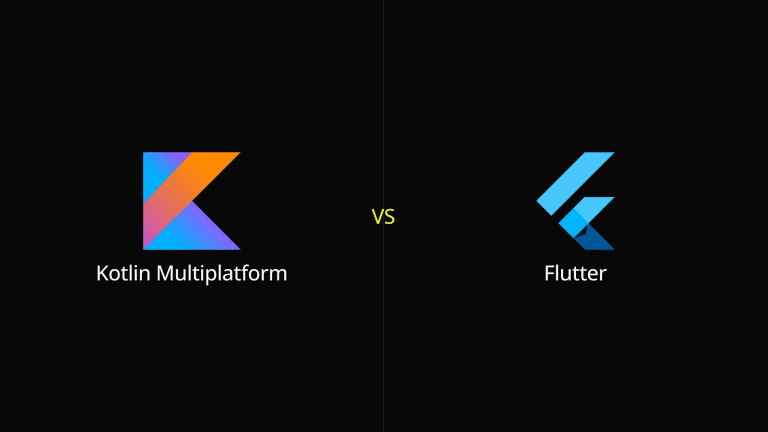Like a well-oiled machine, a team’s productivity can skyrocket when they’re given the right tools. One notable tool that’s changing the game is smart scheduling apps. They’re not just digital calendars you use to create a work schedule; they’re sophisticated systems that streamline processes, reduce conflicts, and optimize time usage.
But how exactly do these apps revolutionize a team’s productivity? What makes them different from traditional scheduling methods? Stick around, there’s more to uncover about this transformative approach to team management.
Key Takeaways
- Smart scheduling apps enhance productivity and streamline task management by using AI and real-time updates.
- Overcoming resistance to new technology requires education, addressing fears, and ensuring privacy concerns.
- These apps need robust security measures and transparency in data handling to ensure data privacy.
- Successful implementation relies on choosing the right app, supporting team adoption, and proactively tackling issues.
The Downside of Traditional Scheduling Methods
Despite their long-standing use, traditional scheduling methods often lead to inefficiencies and communication breakdowns within teams. It isn’t uncommon for team members to be left in the dark about changes or to be double-booked due to outdated processes.
Traditional scheduling generally relies on manual entry and tracking, making it prone to human error. It’s easy for details to get lost or overlooked, leading to miscommunication and confusion. Moreover, the lack of a centralized scheduling system can result in overlapping appointments or tasks, causing unnecessary stress and reducing productivity.
Furthermore, these methods don’t offer much flexibility. Changes can’t be made quickly and easily, making it difficult to adapt to unforeseen circumstances or sudden changes in availability.
Additionally, traditional scheduling methods are often time-consuming. Managers spend a significant amount of time planning and coordinating schedules, time that could be better spent on strategic tasks. This is an inefficient use of resources and can negatively impact a team’s productivity and effectiveness.
Understanding Smart Scheduling Apps
In light of the drawbacks of traditional scheduling methods, smart scheduling apps emerge as a promising solution to streamline team coordination and boost productivity. These digital tools, developed with the latest technology, are designed to simplify the process of arranging and managing tasks, meetings, and resources. They’re more than just a digital calendar; they’re a comprehensive platform that incorporates AI, machine learning, and data analysis to make scheduling more efficient and less time-consuming.
Smart scheduling apps allow for real-time updates, which means that any changes made to the schedule are instantly visible to all team members. This feature mitigates the risk of miscommunication and scheduling conflicts. Additionally, these applications are equipped with notification systems that remind team members of upcoming tasks or meetings, thereby reducing the likelihood of missed deadlines or forgotten responsibilities.
Moreover, smart scheduling apps are highly adaptable and customizable. They can be tailored to suit the specific needs and workflows of different teams, making them a versatile tool for a wide range of industries and work environments. Whether it’s a small startup or a large corporation, there’s a smart scheduling app that’s right for every team.
How Smart Scheduling Apps Boost Productivity
How exactly do smart scheduling apps enhance team productivity?
Primarily, they streamline task management. With everything from project timelines to individual tasks laid out clearly, team members can see what needs doing and when. They’re less likely to forget tasks or miss deadlines, and that’s a big productivity booster.
These apps also facilitate better communication. Team members can update their progress, share files, and discuss tasks within the app. This cuts down on time wasted on emails and meetings, leaving more time for actual work.
Another key way these apps boost productivity is by automating mundane tasks. Things like scheduling meetings, assigning tasks, or sending reminders can be automated, freeing up time for more important tasks.
Finally, smart scheduling apps provide valuable insights into team performance. They track data like task completion rates and time spent on tasks. This data can be analyzed to identify bottlenecks and areas for improvement.
In short, smart scheduling apps boost productivity by making task management more efficient, improving communication, automating routine tasks, and providing performance insights. They’re a valuable tool for any team looking to improve their productivity.
Key Features of Effective Scheduling Apps
Effective scheduling apps are not just about setting reminders or marking dates; they possess certain key features that set them apart. These include app customization capabilities, real-time collaboration tools, and automated scheduling features. Let’s explore how these elements enhance team productivity in the next section.
App Customization Capabilities
Customization capabilities serve as a cornerstone of effective scheduling apps, allowing teams to tailor the software to their unique needs and workflows. They provide flexibility that’s critical in today’s dynamic work environment. With customization, each team can adjust the app’s settings, features, and interface to match their specific operations and preferences.
For instance, a marketing team can customize their scheduling app to keep track of campaign deadlines, while an IT team might configure it to monitor software deployment timelines. The beauty of customization is that it’s not one-size-fits-all. It allows for modifications that reflect the diversity in team structures, tasks, and goals. In a nutshell, app customization capabilities aren’t just nice-to-have extras, they’re essential for maximizing the benefits of scheduling apps.
Real-time Collaboration Tools
Diving into the heart of team productivity, real-time collaboration tools are a game-changer in scheduling apps, fostering seamless communication and coordination among members. These tools allow teams to dynamically adjust and track schedules, ensuring everyone’s on the same page. They eliminate the need for back-and-forth emails, reducing confusion and boosting efficiency.
They’re designed to provide a shared workspace where one can easily see who’s available, who’s busy, and when. This transparency prevents double-booking and over-scheduling. In addition, they enable instant updates, so if a meeting gets rescheduled or a task is completed sooner than expected, everyone knows immediately. Thus, real-time collaboration tools in scheduling apps are not just bells and whistles; they’re integral to maximizing team productivity.
Automated Scheduling Features
Harnessing the power of automation, scheduling apps streamline team productivity by handling tasks such as appointment setting, reminders, and rescheduling with minimal human input. They’re equipped with automated features that offer a plethora of benefits, like saving time and reducing manual errors.
One key feature is the ability to set recurring appointments, ideal for regular team meetings. Another is automatic reminders, which prevent missed appointments and help manage time more effectively. These apps can also automatically adjust schedules based on staff availability, ensuring no overbooking or under-utilization of resources.
Furthermore, some apps offer smart rescheduling options that suggest alternative times in case of conflicts. By integrating these automated scheduling features, teams can improve their efficiency, focus on their core tasks, and ultimately enhance their productivity.
Overcoming Resistance to Tech Adoption
Despite the clear advantages of scheduling apps, some team members might push back against adopting new technology. Resistance often stems from fear of the unknown, perceptions of increased workload, or concerns about privacy. However, leaders can tackle these issues proactively to ease the transition.
Firstly, teams must be educated about the benefits of the app. Visual aids, infographics, or hands-on demonstrations can help to illustrate the ways these apps can streamline tasks and save time. It’s crucial to highlight how learning this new tool isn’t an additional task but an investment that’ll free them from mundane scheduling chores.
Secondly, leaders should offer support during the transition period. This can be through a dedicated tech-support team or a peer-mentoring system. It’s essential that team members don’t feel left out in the cold with a new tool they’re struggling to understand.
Finally, on the privacy front, leaders should ensure the chosen app has robust security measures. Transparency about data handling can alleviate concerns.
Encouraging tech adoption isn’t always smooth sailing, but with the right approach, it’s possible to overcome resistance and step into a more productive future.
Case Studies of Successful App Implementation
Drawing on real-world examples can further illustrate the transformative power of scheduling apps in enhancing team productivity. Consider the case of a global marketing firm, struggling with time zone differences and missed deadlines. They implemented a smart scheduling app which allowed team members across different time zones to sync their schedules, assign tasks, and track progress. Within two months, they reported a 30% increase in on-time project completion.
In a different scenario, a small tech start-up found it hard to manage their growing team’s schedules. Using a scheduling app, they automated task distribution and meeting schedules. Team members could now see their tasks, deadlines, and upcoming meetings in one place. The result was a 40% decrease in scheduling conflicts and a significant boost in productivity.
Whether it’s a multinational corporation or a small start-up, scheduling apps are revolutionising the way teams work. These case studies underscore the potential of these tools to improve team efficiency and productivity. They’re not just making scheduling easier, but also transforming the way teams collaborate and deliver on their commitments.
Choosing the Right Scheduling App for Your Team
So, how do you choose the right scheduling app that will boost your team’s productivity? It’s not as daunting as it may seem. The first step is to understand the specific needs of the team. It’s crucial to identify the challenges that currently hinder productivity. Is it communication, task tracking, or time management? A clear understanding of these issues allows for the selection of an app that offers solutions tailored to these needs.
Next, the team’s comfort with technology plays a critical role. There’s no point in selecting a sophisticated app if the team prefers simple, straightforward interfaces. The app should be user-friendly, intuitive, and require minimal training.
Consider the app’s compatibility with existing software. It’s much easier if the app can integrate with tools the team is already using. This prevents the disruption that comes with learning and adapting to an entirely new platform.
Conclusion
Smart scheduling apps revolutionize team productivity by modernizing traditional scheduling methods. They offer key features that streamline tasks, save time and boost efficiency. While adopting new tech may face resistance, success stories demonstrate their undeniable benefits. Ultimately, selecting the right app for your team is crucial. Embrace smart scheduling apps and witness a significant transformation in your team’s productivity.










